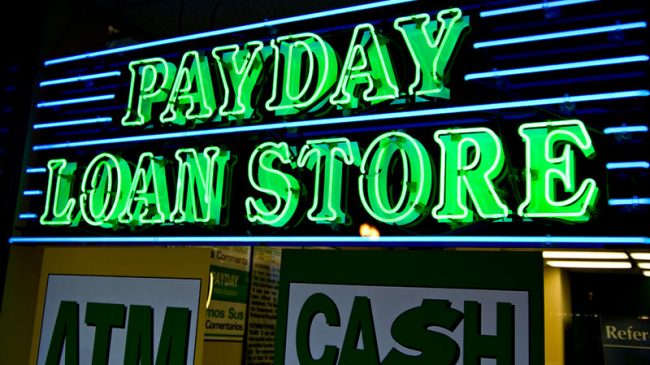The payday lending industry has enjoyed meteoric growth in the past couple of decades. From virtually no payday lending stores in the early- to mid-1990s, it has grown to more than 20,000 outlets today. These payday lending facilities extend about $38.5 billion in short-term credit to 19 million American households a year.
The payday lending industry’s success has been accompanied by a backlash from politicians, consumer groups and many journalists who accuse the industry of taking advantage of vulnerable individuals and targeting certain populations in order to extract their wealth. The result is that regulation of payday lending has grown almost as fast as the industry itself.
The industry responds to its critics by saying that it provides a needed service to people underserved by banks and credit unions, allowing them access to credit they would not otherwise have so that they may make it through periods of financial difficulty. Who is right? On closer inspection, many of the criticisms of the payday lending industry turn out to be based on myths:
- Payday Lending Myth #1: Excessive Fees. Critics note that typical payday loan fees range from $15 to $30 per $100 loaned over a two-week term. If one were to project the costs out over a one-year period, would translate to an APR of 390 percent to 780 percent. However, it simply does not make sense to project payday loans out over a whole year when they are intended to be repaid in two weeks. What’s more, the short-term alternatives to payday loans – like overdrafts, bounced checks, late credit card payments, and utility reconnect fees – will often prove even more costly.
- Payday Lending Myth #2: The Debt Trap. Critics charge that payday lending companies trap their customers in a cycle of debt. This is contradicted by empirical evidence, however, which suggests that payday lending bans result in worse outcomes for consumers – in the form of more bounced checks, increased rates of bankruptcy, and so on. Ultimately, the debt cycle theory seems to get the causality of payday lending behavior backwards: people use payday loan services because they face financial emergencies, not the other way around.
- Payday Lending Myth #3: Lenders Target the Poor and Minorities. The evidence suggests that while payday lenders are more likely to locate in markets with relatively low household incomes, they are not more likely (after controlling for income) to locate in markets with disproportionate minority populations. To the extent that payday lenders do aim their services at those with low incomes, this may be: (a) an effort to tap an underserved market; and (b) a reflection of the fact that payday customers tend to be those in financial distress. In other words, there is a greater need and natural customer base for payday lending in relatively low income areas.
- Payday Lending Myth #4: Most Consumers Want More Protection from Payday Lenders. Survey data suggests that a significant majority of payday lending customers are satisfied with the service they receive. Meanwhile, state regulators report very few complaints about payday lenders.
Moreover, the evidence shows that payday lending offers many benefits to consumers:
- Greater Consumer Welfare. Payday loans allow consumers to better weather short-term financial difficulties, avoid bankruptcies and bounce fewer checks.
- Increased Access to Credit. Payday loans offer access to credit to those who might not be able to obtain it from other sources such as banks, credit unions or credit cards.
- Transparency. Payday loan terms are displayed prominently in stores for all to see, so customers do not have to parse hundreds of pages of legalese in bank/checking account terms to determine how much the fees will be and when and how they will be assessed.
- Cost. Payday loans frequently offer cheaper rates and better terms than alternate options, such as bank overdraft/bounced check fees, credit card late fees, utility late/reconnect fees, pawn shops, auto title lenders and rent-to-own businesses.
- Better Than Alternatives. Payday loans may be preferable for other reasons, such as allowing borrowers to avoid skipping medical visits, having utilities shut off, resorting to dangerous loan sharks, or enduring embarrassment and potential conflict from borrowing from friends or relatives.
Ultimately, consumers have already rendered their verdict: they believe they benefit from the option of payday loans. So instead of restricting or eliminating payday lending markets through regulation, policymakers should seek to open them up to competition by repealing payday lending bans and regulations. The goal should be to maximize consumer choice and minimize the cost of short-term loan transactions. This will benefit economic growth generally and short-term borrowers in particular.
